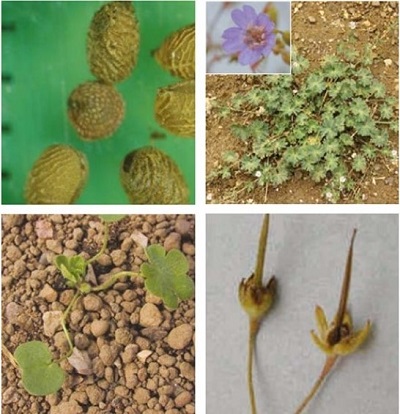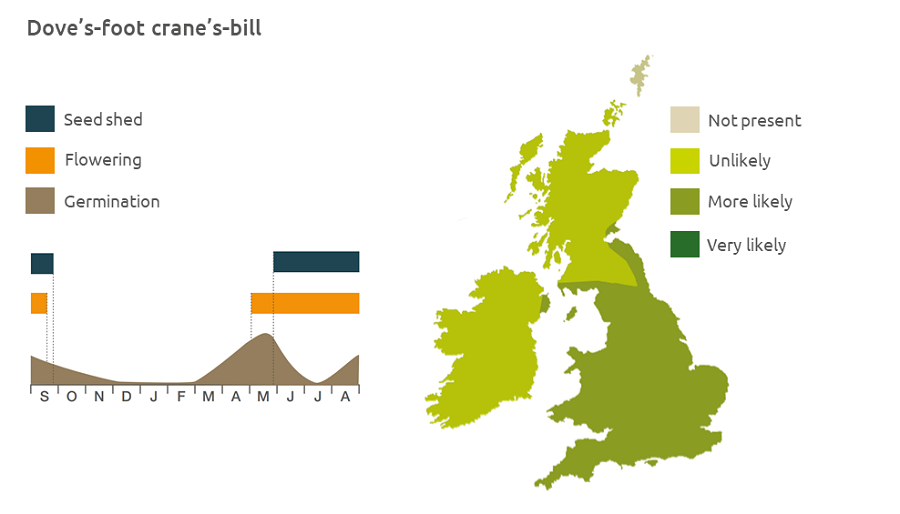- Home
- Knowledge library
- Distribution and biology of dove’s-foot crane’s-bill in the UK
Distribution and biology of dove’s-foot crane’s-bill in the UK
Dove’s-foot crane’s-bill is a broad-leaved weed found in field margins and headlands. Find out how to identify and control it.
Overview
Dove’s-foot crane’s-bill (Geranium molle) is found on lightly grassed margins and in arable crops, particularly in headland areas. Reproduction is by seed. It is most often seen in spring crops, but it can germinate in the autumn and overwinter and grow vigorously in more open winter crops.
- It is particularly competitive in winter oilseed rape
Description
An annual dicotyledon, 10–30 cm tall. The leaves are cut to less than halfway and have a rounded outline.
Key features
Plant: It is distinguished from other geraniums by the almost round leaves. The stems are covered by both long and short hairs, so look softly hairy.
Flower: The pink petals have broad, blunt notches at the tip.

Location and life cycle

Geographic distribution
Dove’s-foot crane’s-bill occurs in a wide range of habitats, up to an altitude of 550 m. It prefers some bare ground and is not frequent in arable crops.
Soil type
It is found on moderately dry, loose sandy soils, rich in humus and nutrients with pH >5.
Seed statistics
- Seed longevity: >5 years
- Seed weight: 1.25 mg
- Seeds/flower: 5
- Seeds/plant: 100–1,500
Management
For advice on herbicides, please speak with your agronomist or adviser.
When was this information last updated?
This page is based on content from the encyclopaedia of arable weeds publication. Since it was first released in 2008, the publication has been redesigned several times but not revised. However, it remains a good foundation for general information on the distribution and biology of weeds.

